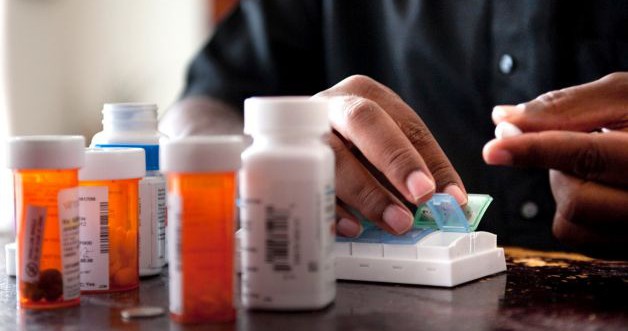
Less than one-third of Americans living with HIV have the virus under control, compromising their own health and putting others at risk of infection, U.S. health officials reported this week.
The report by the U.S. Centers for Disease Control and Prevention (CDC) found that 840,000 of the 1.2 million people infected with HIV in 2011 — 70 percent of all HIV-positive Americans — were not consistently taking anti-HIV drugs that keep the virus suppressed at very low levels.
Of that number, 66 percent had been diagnosed with HIV but were not getting regular care; 20 percent did not know they were infected, while 10 percent were prescribed anti-HIV medicine known as antiretroviral therapy but were still not able to get the virus under control, and 4 percent of patients were under physician care but were not prescribed antiretroviral medicines.
Studies have shown that viral suppression can extend the lives of people infected with the virus and can cut the risk of transmitting the infection to others by as much as 96 percent.

“For people living with HIV, it’s not just about knowing you’re infected – it’s also about going to the doctor for medical care. And for health care facilities, it’s not just about the patients in your care – it’s every person diagnosed, and every person whose diagnosis has not yet been made,” CDC Director Tom Frieden said in a statement. “Key to controlling the nation’s HIV epidemic is helping people with HIV get connected to – and stay in – care and treatment, to suppress the virus, live longer and help protect others.”
Young people least likely to have virus under control
According to the CDC, the percentage of Americans with HIV who achieved viral suppression remained roughly stable, with 30 percent achieving that goal in 2011, the latest year for which data are available, compared with 26 percent in 2009.

The report also found that young people were significantly less likely than older people to have the virus under control. Only 13 percent of people aged 18-24 achieved viral suppression in 2011 compared to 23 percent of those aged 25-34, 27 percent of those aged 35-44, 34 percent of those aged 45-54, 36 percent of those aged 55-64, and 37 percent of those aged 65 and older.
The researchers attribute the disparity in large part to the number of undetected HIV cases in the younger population. According to the report, less than half (49 percent) of 18-to-24-year olds with HIV have been diagnosed, underscoring the need for more HIV testing in this population.
“It’s alarming that fewer than half of HIV-positive young adults know they are infected,” said Eugene McCray, M.D., director of CDC’s Division of HIV/AIDS Prevention. “Closing that gap could have a huge impact on controlling HIV – knowing your status is the first critical step toward taking care of your own health and avoiding transmission to others.”
The report’s authors recommend that all adolescents and adults “should be tested for HIV infection at least once.” And those who are diagnosed with the virus “should receive medical care and be offered ART as soon as possible after diagnosis with HIV infection…to prevent deterioration of immune function, prolong life, and decrease transmission risk.”
Increasing screening rates could reduce transmission
The rate of HIV infections diagnosed in the United States each year has fallen by one-third over the past decade, thanks largely to improvements in testing and early diagnosis, as well as advances in treatment, including increased use of antiretroviral therapy. Still, an estimated 50,000 Americans become infected with HIV each year, though about one in five don’t know it.
Furthermore, even though infection rates are dropping overall, they’re still on the rise among gay and bisexual young men. African Americans are also disproportionately affected by HIV. In 2010, African Americans made up only 12 percent of the US population, but had 44 percent of all new HIV infections.

Unfortunately, recent research indicates that many at-risk individuals are not accessing HIV screening services and thus could be unaware that they’ve been infected. According to a report released in September, nearly half of gay and bisexual men under 35 aren’t getting tested for HIV.
Given that up to half of the 50,000 new HIV infections in the U.S. each year are transmitted by people who don’t know they have the virus, facilitating early screening and intervention could have a substantial impact on transmission rates.
“There is untapped potential to drive down the epidemic through improved testing and treatment, but we’re missing too many opportunities,” Dr. Jonathan Mermin, director of CDC’s National Center for HIV/AIDS, Viral Hepatitis, STD, and Tuberculosis Prevention, said in a statement.
HIV screening is now covered by health insurance without a co-pay, as required by the Affordable Care Act. If you do not have medical insurance, there are places where you can get an HIV test at a reduced cost or for free.
